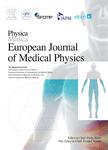版权所有:内蒙古大学图书馆 技术提供:维普资讯• 智图
内蒙古自治区呼和浩特市赛罕区大学西街235号 邮编: 010021

作者机构:Univ Calgary Dept Phys Astron & Oncol Calgary AB T2N 4N2 Canada
出 版 物:《PHYSICA MEDICA-EUROPEAN JOURNAL OF MEDICAL PHYSICS》 (医学物理)
年 卷 期:2016年第32卷第1期
页 面:242-247页
核心收录:
主 题:3D printing Desktop phantom fabrication Experimental verification Dose calculation algorithm
摘 要:Purpose: To present characterization, process flow, and applications of 3D fabricated low density phantoms for radiotherapy quality assurance (QA). Material and methods: A Rostock 3D printer using polystyrene was employed to print slabs of varying relative electron densities (0.18-0.75). A CT scan was used to calibrate infill-to-density and characterize uniformity of the print. Two printed low relative density rods (0.18, 0.52) were benchmarked against a commercial CT-electron-density phantom. Density scaling of Anisotropic Analytical Algorithm (AAA) was tested with EBT3 film for a 0.57 slab. Gamma criterion of 3% and 3 mm was used for analysis. Results: 3D printed slabs demonstrated uniformity for densities 0.4-0.75. The printed 0.52 rod had close agreement with the commercial phantom. Dosimetric comparison for 0.57 density slab showed 95% agreement between calculation and measurements. Conclusion: 3D printing allows fabrication of variable density phantoms for QA needs of a small clinic. Crown Copyright (C) 2015 Published by Elsevier Ltd on behalf of Associazione Italiana di Fisica Medica. All rights reserved.